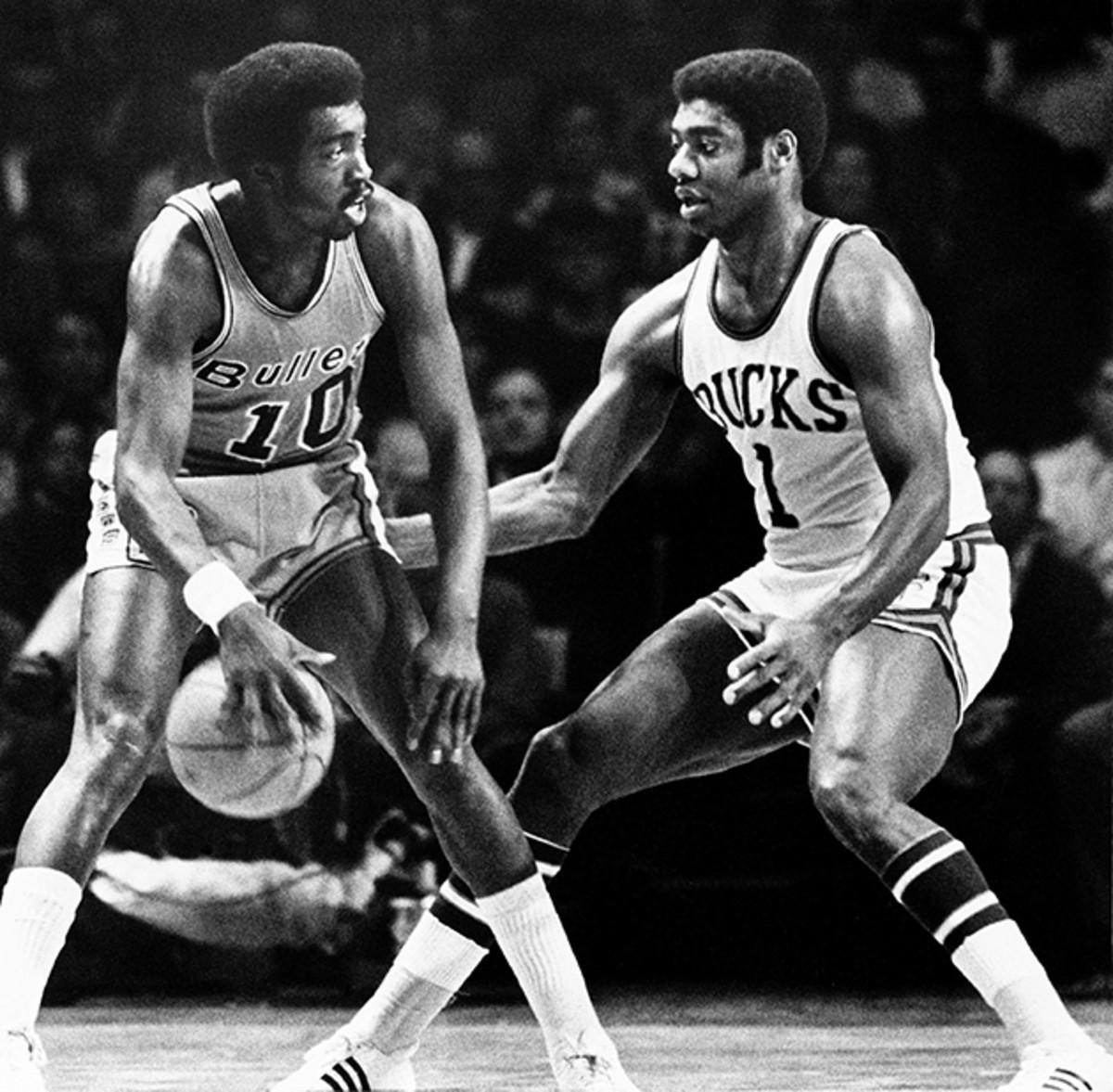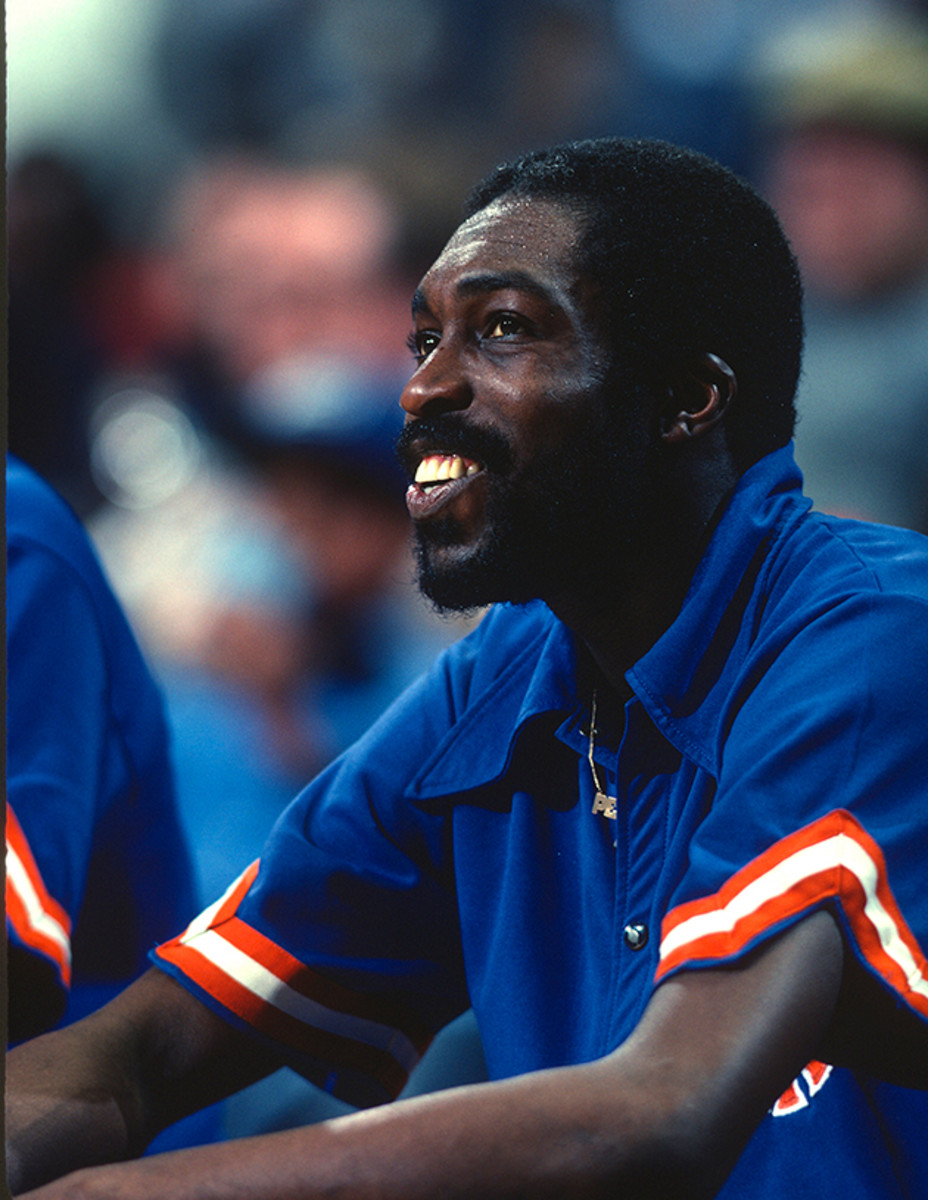Q+A: Earl "The Pearl" Monroe on Training, Modern Ball Handling and the NBA Finals

Edge recently sat down with NBA Hall of Fame point guard Earl Monroe, better known as “The Pearl” and “Black Jesus,” to discuss the state of guard play in today’s NBA. The former Knicks and Bullets star, known for introducing flair and playground-style handles into the league upon his arrival in 1967, weighed in on ball-handling, his favorite players to watch, and new-era training methods.
Edge:Do you see any players today with the kind of improvisational qualities that you and some of your contemporaries had?
Earl Monroe: I guess in some instances it’s unfortunate, because a lot of people say I brought this into the game. How you handle the ball, seeming as though you’re palming the ball, that’s how I’d dribbled until they saw I wasn’t palming it. My rookie year, they were calling me for palming all the time, so we had to show a tape of me dribbling the ball and doing that so they could see my palm wasn’t turning the ball over.
Today, the palming is more visible and more acceptable, because if they called everybody for palming, games would be three or four hours long. It is a bit different in terms of how you handle the ball and what you do. One of the things with guards is perception, being able to see the floor. You have to see not just in real time but you have to see it happening before it happens. You have to more or less dictate what you’re doing to make it happen the way you can see it in your mind, and that’s what a guard should be able to do as far as running the team.
MORE: How Tim Grover Became One of the NBA's Most Revered Trainers

Edge: Who are some of your favorite guys to watch these days?
EM: I like Chris Paul, I like LeBron. He makes it happen. It’s a little bit different because [LeBron's] actually a guard. He plays forward or whatever but he’s actually a guard, and his whole thing is pass-first anyway, so that’s what makes him a lot different than a lot of players. Throughout the league there are a lot of guards that are so effective, you look at Tony Parker, you’d never think he’d be doing what he does, at his height and with his leaping ability, and all he does is shoot layups. You have guys that understand the game and understand what they have to do to make themselves successful. [Derrick] Rose, I used to like him—I say used to, because he hasn’t played in a couple years—but he’s one of those guys that just lets it all out, and I think that’s one of his problems, that he has to understand how to pull it back and then go for it.
NBA Finals: Visit SI For Complete Coverage of the NBA Finals
Edge:You mentioned Tony Parker—he’s kind of an anomaly now, because you see so many guys that are bigger and stronger, making one move to get to the basket rather than the crafty, midrange-type scorers.
EM: That's all part of how they play out in San Antonio. It’s kind of almost a non-statement type of play, but it’s very effective because they play together. You like to see them, they’re not a very flashy team, but they’re a very effective team, and that’s I think, I used to look at the Yankees, they were a very effective team. [No matter which] guys you had coming in, you knew that they were gonna do this, you knew they were going to do that, and that’s pretty much what San Antonio's guys do.
Edge:Today there’s such a big emphasis on strength and speed training. How much weight did people put on it back then as opposed to today?
EM: Well, we didn’t do the strength training. I think our thing was different because we played all year. We were playing in the NBA and then we’d play in summer leagues, so we kept our strength up and our flexibility and things like that as we played during the year. These guys with the strength training and what they do now is so specialized. It just makes them that much stronger, and the durability unfortunately seems not as good, because you get a lot of sprains, breaks, you know, guys are out a lot. Which seems strange because you’re stronger, you’re fit, but you’re not fit enough it seems.
But I think you have to have it, you have to be competitive enough, so a team here that does certain types of weight training and another team that does another type—weight training for me involves some weight, but a lot of extensions, you try and keep your muscles as long as possible. When your muscles tighten up is when you get the hamstring pulls and things like that.

I sometimes wonder if some guys, I don’t know if they necessarily look like it, but they might be over-muscled. Especially when you’re exploding—talking about Derrick [Rose]—he’s so explosive naturally, but if you put a lot of extra weight on top of that, it can be harder for the whole body to take.
EM: I think the problem can be when you’re doing weights and all that, you get enamored with size. The guy who keeps a long, lean frame, that’s the guy you know is going to be your thoroughbred. Isiah Thomas had a theory when he was here in New York that those were the kind of guys he wanted to have on his team, the guys that were long, lean and able to get up and down the floor. It changed the concept of what the game was going to be about, because you knew you could get the ball up off the backboard and run.
PHOTOS: How Basketball Training Has Changed Through the Years
Edge: Why do you think there’s been a shift toward bigger point guards?
EM: I think that the shift is because there aren’t a lot of centers, and everybody wants to be a point guard. You have centers, like Andray Blatche, he’s 6’11”, whatever, he was playing guard and all that kind of stuff, you get to the league and you still have some of those tendencies. Guys just handling the ball too much, you gotta get it out and get it to the guys that can distribute, fill your lanes and so forth. The game itself is just a real simple thing—it’s the guys who play it that make it hard.
